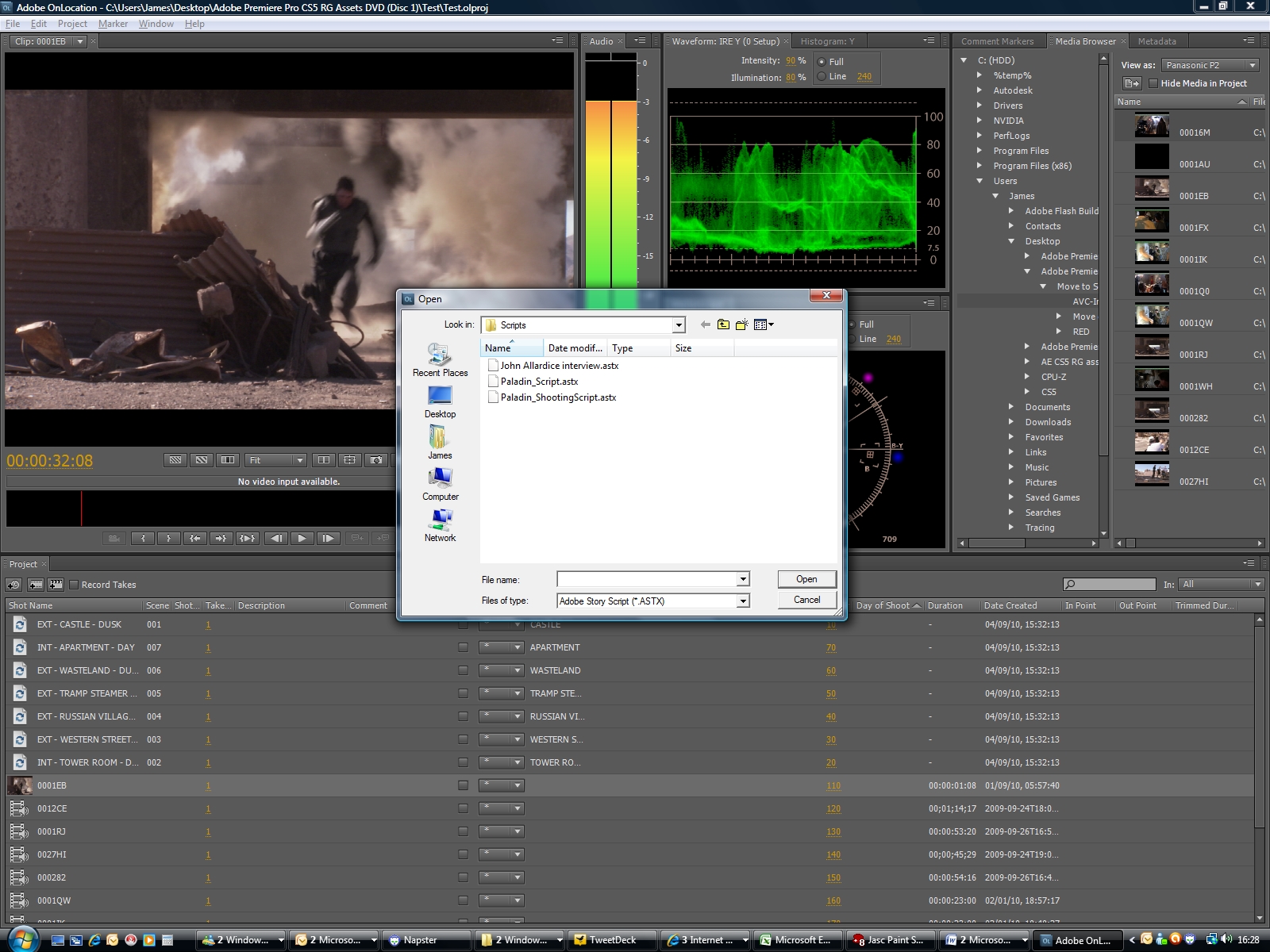

In CS4, Premiere Pro would have to render these effects using the computer’s CPU before handing off the rendered frames to Adobe Media Encoder for rendering to H.264, which could (and often did) take hours.
ADOBE ONLOCATION CS5 DSLR 720P
So assume you’re producing a project for 720p upload to YouTube in H.264 format, and you’ve applied the Fast Color Corrector effect, an Ultra chroma key effect, a title, and a picture in picture or two. Perhaps even more important (and pay attention here), the GPU accelerates the application of these effects during rendering to your final output format.

This means that you can apply these effects and preview immediately, without rendering (I know, that’s redundant, but I’m trying to avoid adding to the iPad effect by being painfully clear). You can see all the color-correction-related effects that are accelerated in Figure 1 in addition, the new Ultra greenscreen that Adobe added to Premiere Pro is also accelerated, as are overlays like titles, scaling effects (such as picture-in-picture effects) and many others.

If they are accelerated, and you have the right Nvidia card in your system, the GPU will render the effect when you apply it to your project, generally in realtime. New in Premiere Pro CS5 are little icons to the right of some effects that tell you whether they are accelerated, or work in 32-bit or YUV space.
ADOBE ONLOCATION CS5 DSLR SOFTWARE
The little icon on the left in Premiere Pro CS5 tells you that the effect is GPU accelerated.īasically, that means that CUDA lets software developers such as Adobe access the graphics card to accelerate certain functions, such as preview and rendering. CUDA is the computing engine in Nvidia graphics processing units or GPUs that is accessible to software developers through industry standard programming languages.”įigure 1. “CUDA (an acronym for Compute Unified Device Architecture) is a parallel computing architecture developed by Nvidia. Depending upon where you look, GPU acceleration has been described as part of the Mercury engine, and has also been called CUDA technology, since that’s Nvidia’s brand for the underlying technology. The second component, GPU acceleration, only works if you have a supported Nvidia graphics card in your computer (check the Adobe website for compatible cards ). Yes, you can only run CS5 on a 64-bit system (as has been reported for awhile now) and you’ll need gobs of RAM-I’d say at least 16GB, perhaps as much as 24GB-to really see the benefits.

Briefly, the Mercury Engine is a brand assigned to a collection of three software improvements: 64-bit native code, the greater memory addressing that this enables, and superior multiple-core CPU use. What produces this speed increase? Three components: the Mercury Playback Engine graphics processing unit (GPU) acceleration and a new, much higher-performance H.264 codec from third-party codec vendor and Adobe supplier MainConcept. At the risk of adding to the iPad effect, that’s simply astounding. Specifically, in one of my tests, which involved a 20-minute ballet audition video, rendering time of the 7D footage dropped from 84:45 (min:sec) to 3:57 on a 12-core HP Z800. Specifically, if you’re working with H.264-based footage, such as footage shot with the Canon EOS 7D or AVCHD camcorders, you could see a drop in rendering time of as much 95 percent. Adobe Story, the start of the script-to-screen metadata workflow. CS5 sings on a multicore computer such as HP’s 12-core Z800. The little icon on the left in Premiere Pro CS5 tells you that the effect is GPU accelerated.


 0 kommentar(er)
0 kommentar(er)
